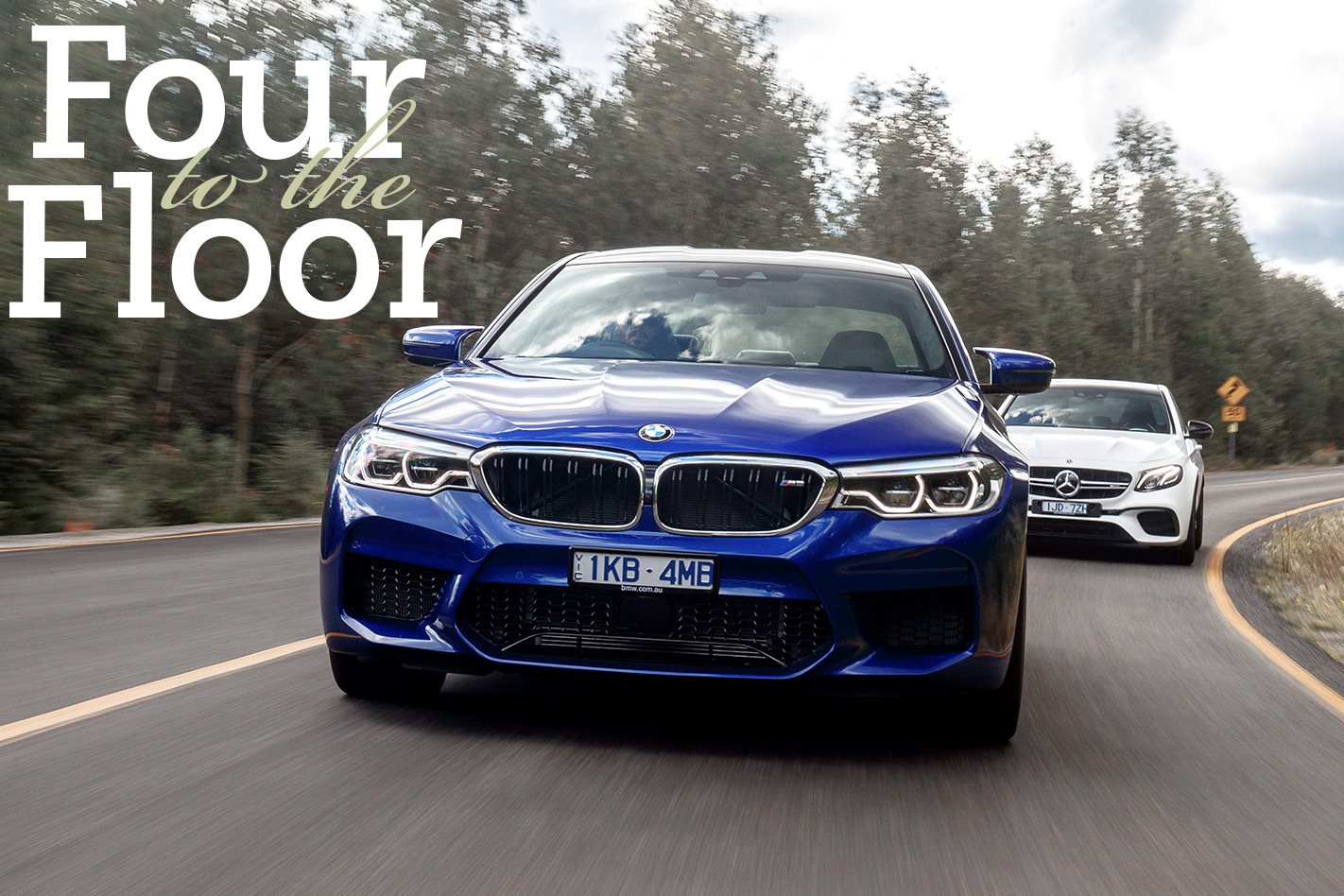WE’RE ACCELERATING quicker than a flat-chat Ferrari F40, three-up with a bootful of bags. The climate control is delivering warmth, the heated seats are fired up and my passenger is on Bluetooth ordering takeaway. Preposterous numbers flash up on the M5’s head-up display, its giddying gathering of pace refusing to pall at road-legal speeds.

This is new territory for BMW – the debut of all-wheel drive for its pin-up performance sedan – and if this is Munich’s brave new world, then all I can do is shake my head in wonderment at how we arrived here.
It hasn’t arrived alone, though. The Mercedes-AMG E63 S 4Matic+ has occupied this turf for the past year, redefining the terms of reference for high-performance large sedans. Even the crazed, end-of-an-era HSV GTS-R W1, the car that saw the domestic industry go supernova, can’t level with this sort of grunt, trailing both the AMG and M5 across the key benchmark sprints by at least half a second.
Tracing the genesis of this Wagnerian butting of heads takes us back to 1996, when Mercedes’ 206kW E36 AMG was launched. This was fairly easily handled by BMW’s imperious 250kW E34 M5 3.8 and Munich’s dominance continued with the 1998 E39 M5. This 294kW 4.9-litre V8, manual-only powerhouse remains, for many, the M5’s finest hour. Its successor, the 2005 E60 M5, marked a change in philosophy. Most markets never saw a manual version, the automated single-clutch transmission was fragile and the exotic 373kW V10 powerplant lacked the sweetness of the old V8.

Then Mercedes weighed in with a V8 of its own and it was a thing of beauty. The 2007 E63 AMG was fitted with the 6208cc M156 lump, the first production engine designed autonomously by AMG. Since then it’s largely been advantage Affalterbach, with the M division repeatedly trying to regain its mojo.
So there’s a lengthy formline here and the E63 S carries itself with the confidence of an undisputed champ. The F90 M5 might be the newer car, but the AMG still has the advantage in terms of power (450kW vs 441) and, more decisively, torque (850Nm vs 750). It’s 25 kegs heavier than the BMW, and in terms of power to weight has an infinitesimal edge. Needless to say, on paper this appears a close-run thing.
So it proves at the strip too. It’s almost impossible to separate these two cars in terms of pure performance. The M5 was initially reluctant to engage launch control, and you’ll only really discover if the car’s opaque series of distance and temperature prerequisites are met when you plant the brake pedal and then floor the throttle. If launch control is ready, the revs build crisply to nearly 3000rpm, a flag symbol appears on the dash and you’re good to sidestep the brake pedal. If not, the first you’ll know of it will be the car groaning and straining against the picks, inching forward accompanied by a soundtrack that’s reminiscent of the final moments of a Bond villain’s lair. It’ll have anyone with an iota of mechanical sympathy wincing in horror.
An eight-speed ZF automatic replaces the old Getrag seven-speed dual-clutch transmission and, once launch control gets its pants on, bangs home shifts with a punchiness that belies its fluid interface. It’s markedly more accelerative than the old rear-drive car, the VBOX repeatedly registering 3.6sec to 100km/h, a 400m time of 11.5sec (at 201km/h), and 80-120km/h in 2.1sec.
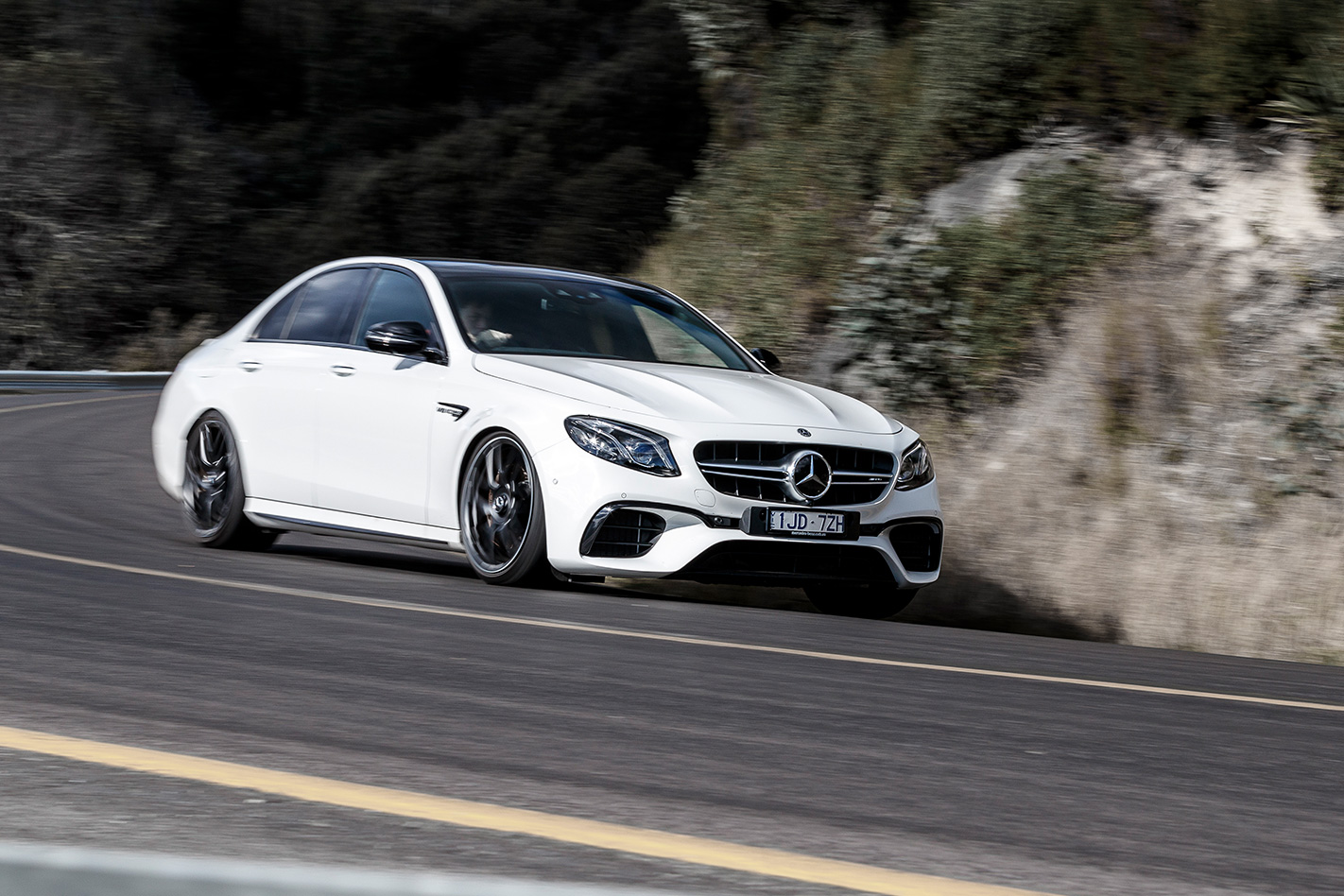
Then the Mercedes does exactly the same thing. We try repeatedly to go faster, and then the AMG finally manages to squeak an infinitesimal advantage, a mere tenth here and there. In the real world of reaction times, differences in contact-patch friction and a constellation of other variables, there’s really nothing to separate them in a straight line.
Both cars have rear-drive-only modes, which require the switching off of any semblance of electronic stability control, therefore limiting their utility on the road. Not being able to dial the cars into a lenient stability-control setting (dubbed M Dynamic Mode in the BMW and ESP Sport in the AMG) while in rear-drive-only mode is frustrating, and this tone-deaf chicanery grates because both cars are otherwise so long on substance.
Away from the timing gear, they’re incredibly divergent in feel. The AMG offers an instant hit. You’ll understand what this car is about within the first kilometre. That’s not to say it’s in any way one-dimensional, just that there’s an instant cohesion and accessibility to its skillset. It’s longer, lower and wider than the M5 and the front seats hunker down further, giving it an inherently sportier feel.
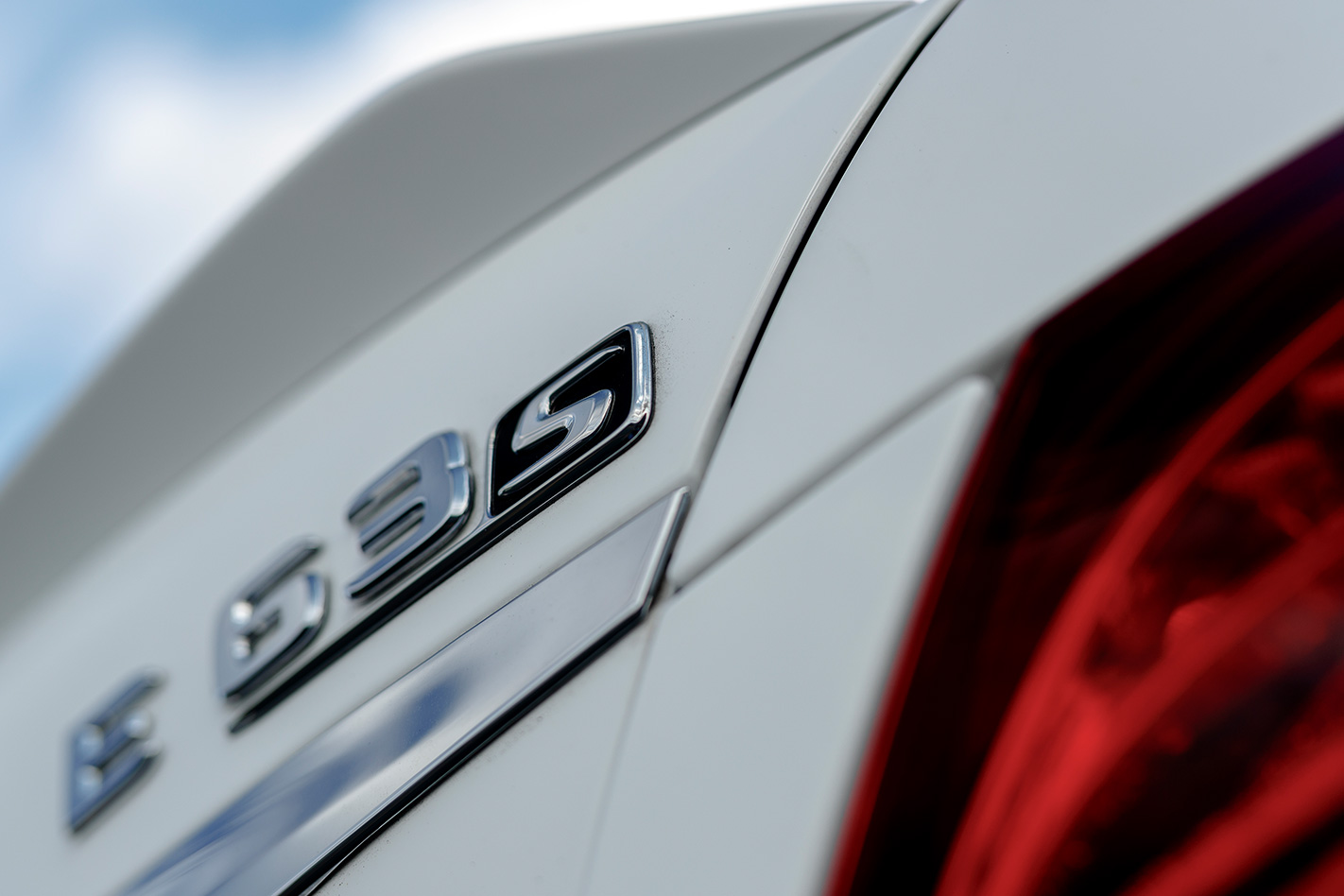
Its standard air suspension lends it just enough pliancy in its Comfort setting and the pre-selectable drive modes of Comfort, Sport and Sport Plus are all fairly self-explanatory, sensibly different in feel to one another and each with a measure of real-world usefulness. There’s no setting for adjusting the weighting of the steering.
The BMW offers a dizzying number of permutations of steering, suspension, throttle mapping, transmission logic and vehicle sound settings. There are Comfort, Sport and Sport Plus modes, and you can assign a couple of favourite settings to the M1 and M2 tabs on the steering wheel to quickly change from ambling mode to maximum attack. Switching from Comfort to Sport tightens things a tad, but switching to Sport Plus is a huge step up in focus.

As with most aspects of the M5, it takes time to get to know the car. You need to set yourself aside a few hours on quiet roads to really understand what settings best gel. Dial everything up to the angriest and in some areas it can feel even fiercer than the more overtly hardcore E63 S.
An example? The torque delivery of the M5 appears earlier and harder. It makes its peak torque at 1800rpm whereas the Mercedes has to wait until 2500rpm. Agreed, the AMG ultimately makes more, but to counter that, the M5’s turbos have a harder initial hit, delivering a more exciting rush. And they have 25kg less to move.
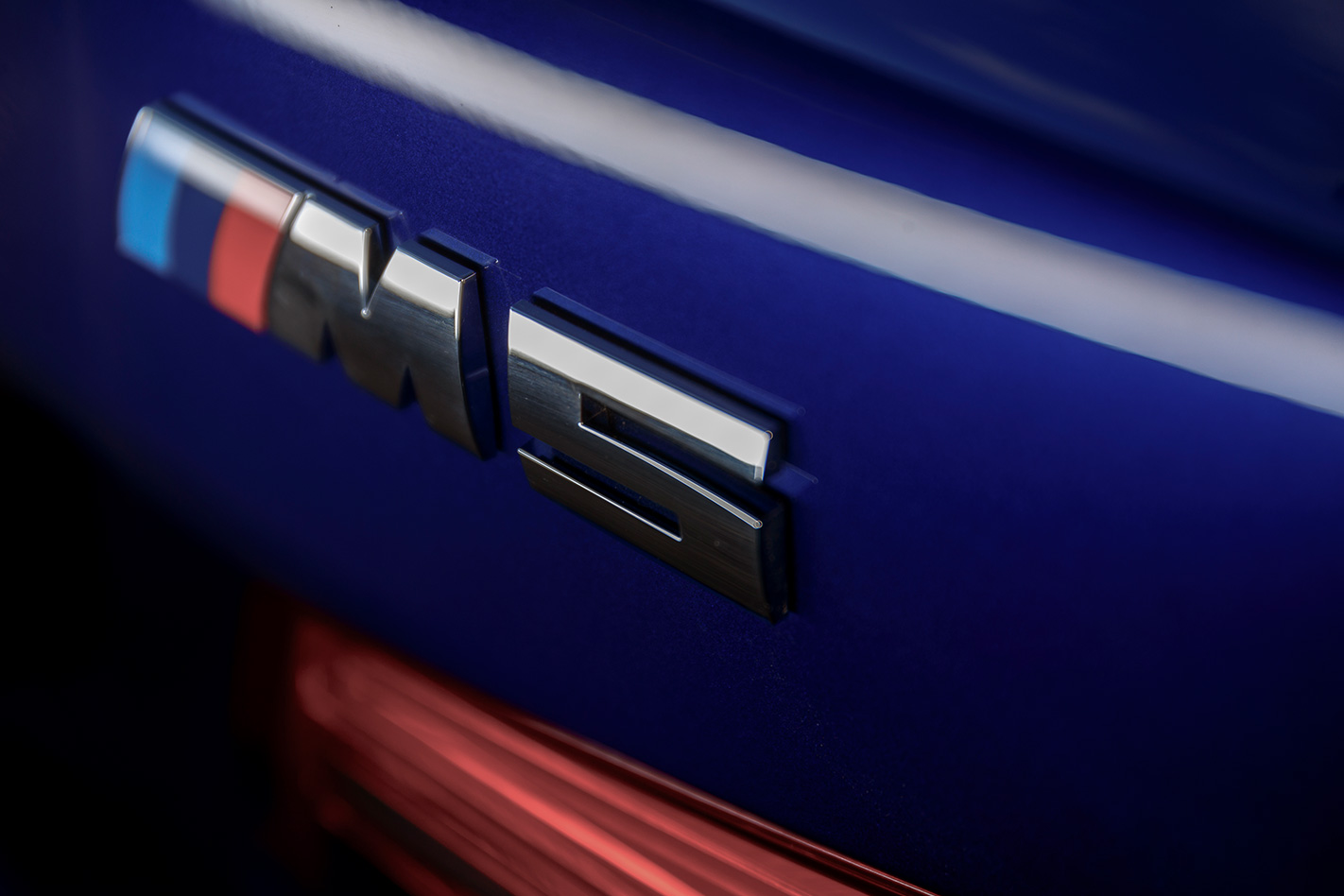
There’s a lot that’s fundamentally right about the M5 from a sporting perspective too. It has bigger brakes both front and rear, which is always a bonus. In addition to that, when you specify the optional $16,500 carbon stoppers (which pare 23kg of unsprung weight), you get four of them instead of just the front discs that Affalterbach delivers. This approach is apparent in other areas too. BMW fits a carbonfibre roof that saves a massive 21kg over the usual metal roof with integrated sunroof.
Mercedes-AMG fits a couple of huge panes of glass, putting mass exactly where you don’t want it. The BMW’s steering is a bit of an oddity. Drive it in its lightest mode and the variable-effort rack feels sweet and precise. Start shifting it up through Sport and Sport Plus and you’ll introduce an unwelcome gluey feel to the helm, but once you’ve done so, changing back to the lightest setting feels like putting the M5 into Prius mode.
Again, that tyranny of choice; that nagging suspicion that whichever one of the myriad settings you’re switched into, simple probability dictates that it’s unlikely to be the best one.

Jump into the AMG and the steering feels instantly heftier and more purposeful, with a clearer line of communication to the tread blocks, but that impression is a clever artifice. The BMW scribes a cleaner line through a corner, the E63’s He-Man impression of caster scrubbing into imprecision earlier than the M5.
Munich also offers a more naturally rear-drive feel to the chassis, while the AMG scores points for a slicker lane keep/active cruise combo. The BMW’s rear-drive mode isn’t speed governed, whereas in the AMG, the front axle slyly rejoins the fray if the needle hits 120km/h. Again and again the two cars’ dynamics steal points from each other, but neither does enough to score a knockout blow.
What’s different are their personalities. Drive the M5 hard through a series of challenging bends and you’ll come away impressed by its grip and composure, before conducting a review of which mode you should have been in. Do the same in the E63 S and you’ll love the way the car shrinks around you. You end up cackling at the sheer antisociality of it. More so if you have the exhaust on full noise.
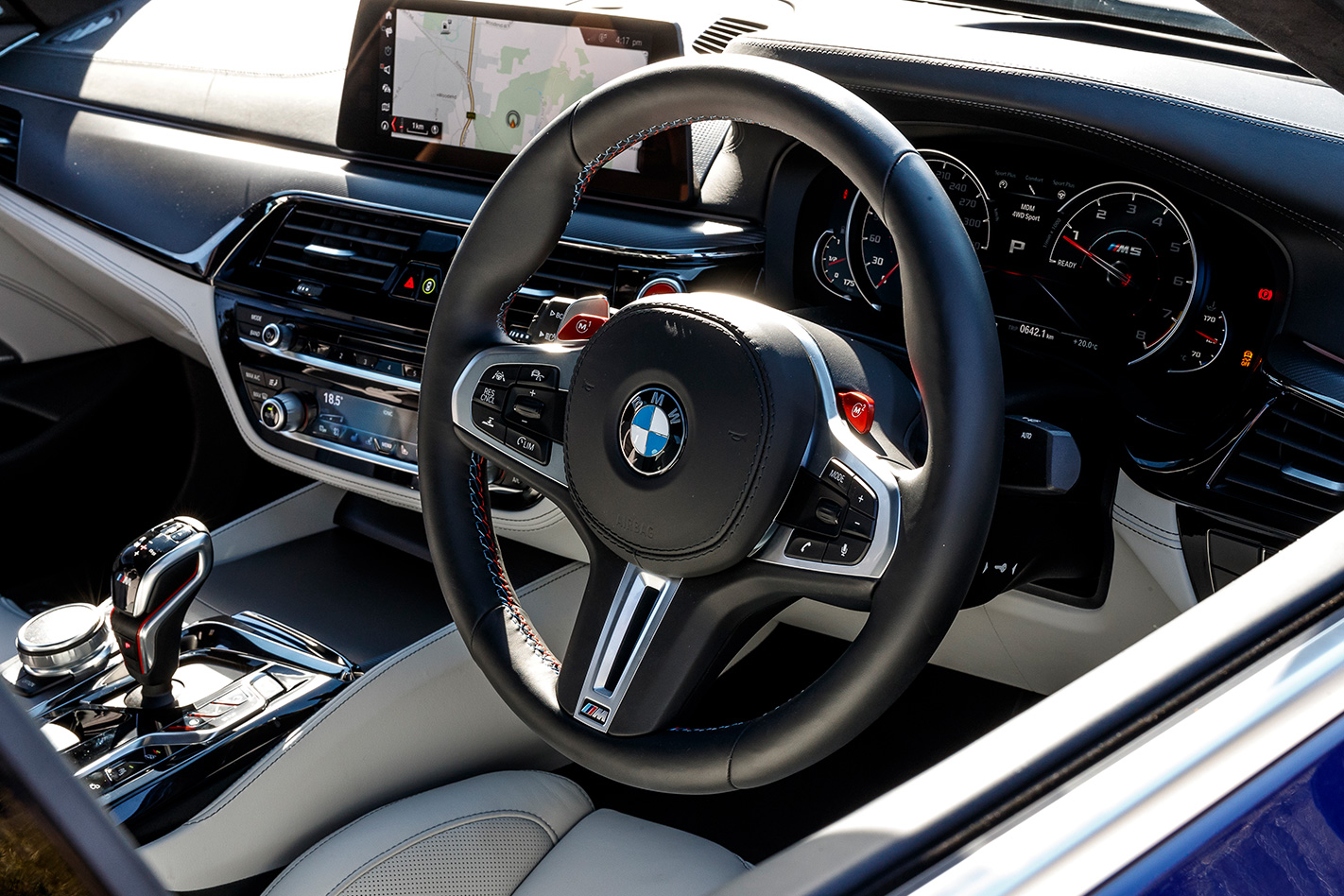
Its repertoire of firework display acoustics is remarkable whereas the M5’s vocabulary begins and ends with a soft boom like a fire door being slammed at the end of a very long corridor. There’s an intensity of emotion to the AMG lacking in the BMW.
On paper, it would seem that the BMW’s price advantage could offset this shortcoming. The E63 S retails at $239,611, while the M5 seems a relative bargain at $199,900. The thing is, Mercedes-AMG has proven for some years that this sector of the market isn’t particularly price sensitive. Customers buy on features and specifications rather than price. And that 40 grand price differential is apparent inside the cabins.
The AMG feels immediately glitzier, with more conspicuously high-end materials such as textured woodgrain dash infills, premium Burmester sound as standard, and a customisable wall-to-wall virtual dash, plus there’s more legroom in the back. But the BMW has some slick touches of its own. The M5’s Alcantara headliner, heated steering wheel, wireless CarPlay, dual rear climate controls and heated and cooled front seats found favour with testers, although the unnecessary complexity of the gear shifter, the faux-carbon trim and omnipresent chiming didn’t.
The glovebox is also basically useless because of the massive – and massively ugly – fragrance dispenser which accepts Nespresso-like pods. Being able to consult the virtual handbook only while you have the handbrake on is also a bind. The AMG comes with a paper manual that passengers can consult on a freeway, but such is the intuitive nature of its controls and electronic functions that you’ll rarely have recourse to. The glovebox fragrance dispenser also looks like some high-end contrivance you’d buy in duty free.
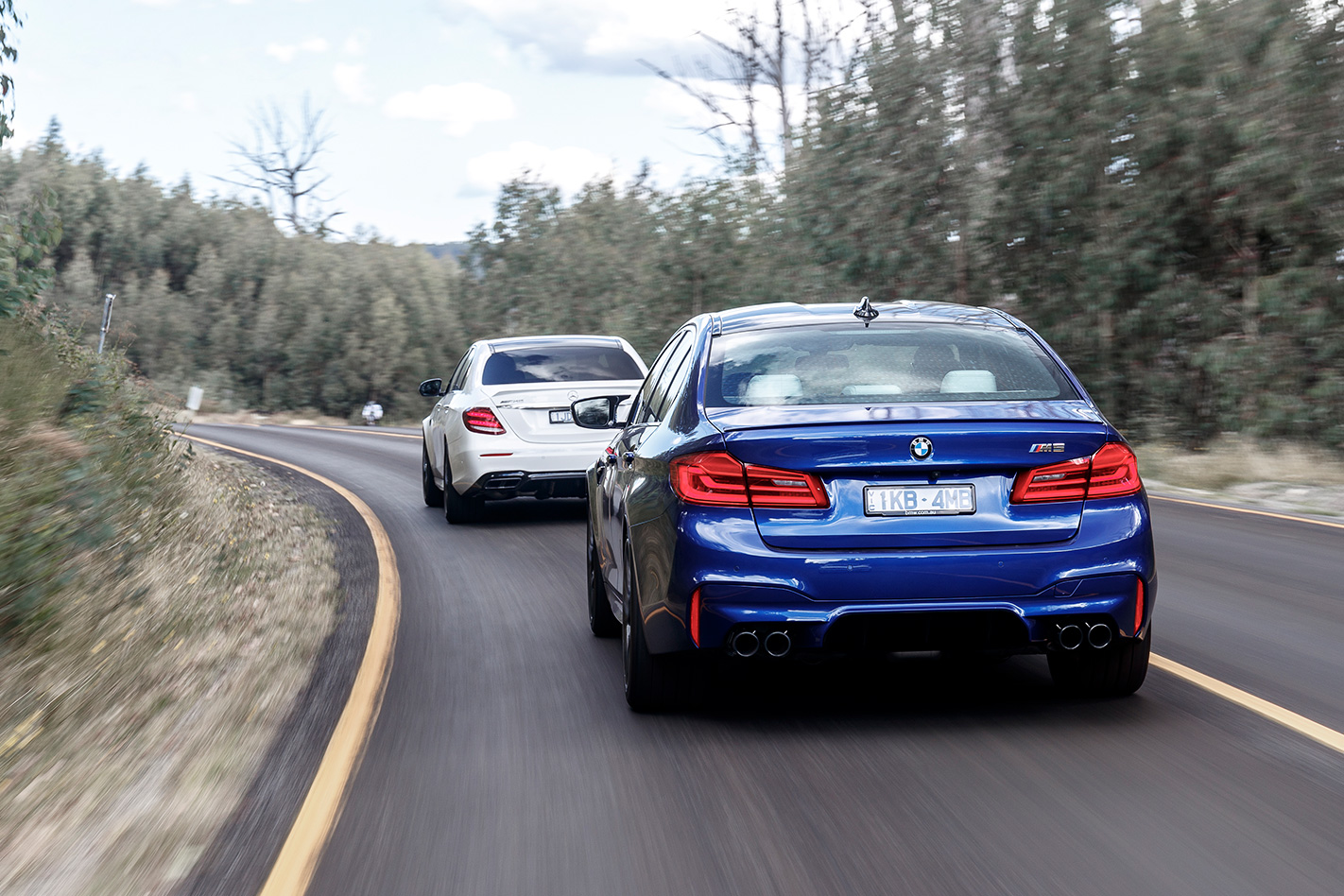
The M5 wears its battledress subtly, BMW having lifted the aesthetics of the cooking 5 Series’ M-Sport trim levels to the extent that the M5 is relatively inconspicuous. The badging, the wheels and the exhausts are the key identifiers, the flanks lacking the gym-toned musculature of the AMG or its bullish stance. Both cars parade feeble and largely cosmetic rear diffusers, yet there’s a degree of discretion about the M5 that some will doubtless find refreshing. It’s not a natural head-turner, which is welcome when you’re sitting on a traffic-choked freeway planning a major nasal excavation project.
Separating these two cars will likely come down to deeply subjective personal choices. So tightly does the M5 benchmark the AMG’s performance metrics that neither wields a decisive advantage over the other in real-world pace. The key objective differences between the two cars on test are the list prices and the fact that the AMG consumed 14 percent more fuel, neither of which count for a whole lot.

So in all probability, it’ll come down to which car feels the more special and, time and again, that’s the AMG. Look beyond the superficial, however, and the BMW emerges as a bit of a grower, offering a quiet assurance and maturity that the in-yer-face Benz can’t measure out. If you’re in the fortunate position to be faced with this decision, it’s good to know that you can’t really lose either way.
The M5 is the more considered choice, but the AMG is just too much fun not to get the nod this time around, but only by a hair’s breadth. We thought the E39 marked the high-water mark of M5 evolution and, while this latest F90 version does nothing to dim the old-stager’s shine, think of it as that car with 50 percent more power and torque, and a welcome element of its effortless sangfroid.
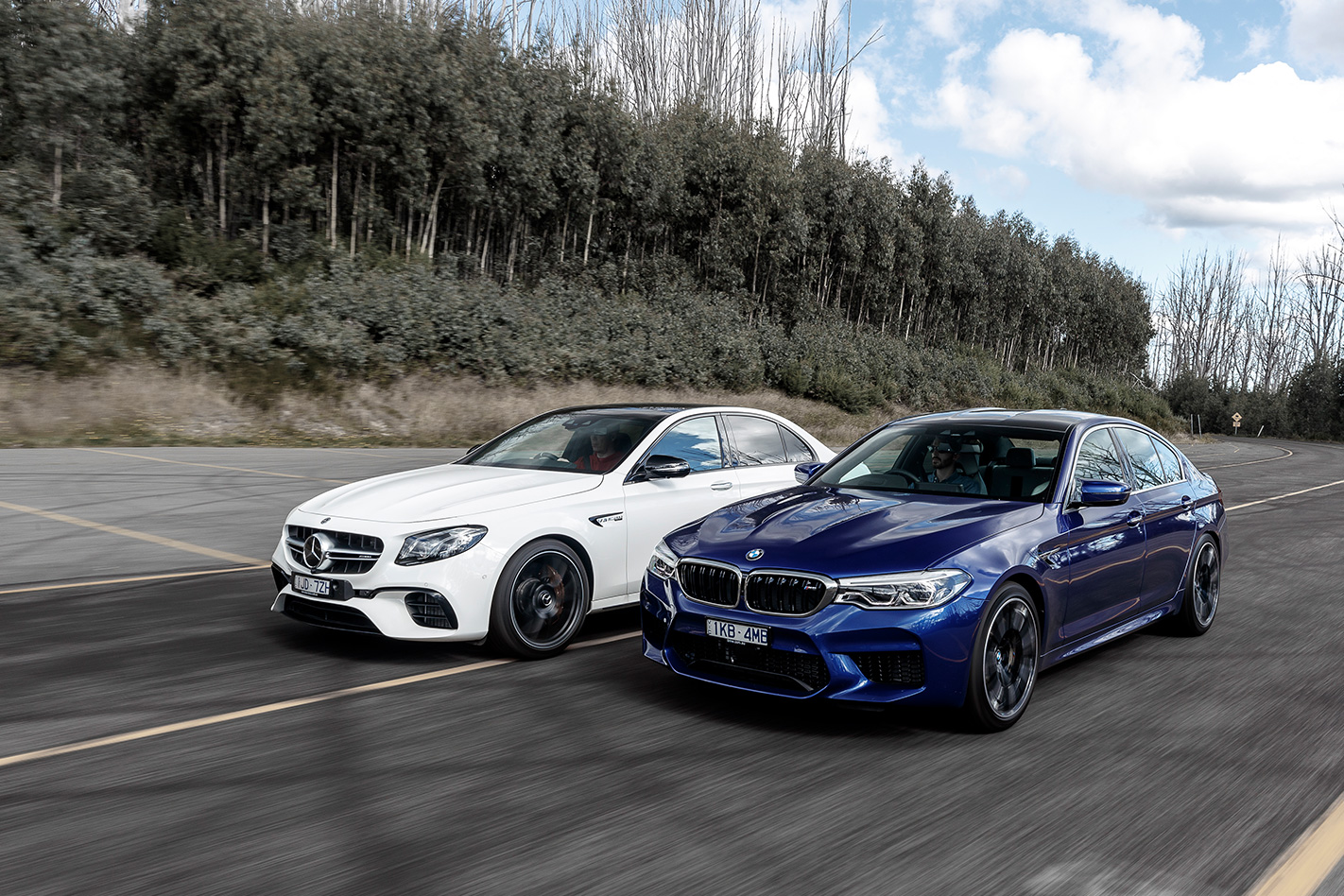
It’s not too big a call to say that this is the best M5 since the E39 retired some 15 years ago. That it has closed Mercedes-AMG’s superiority in this sector to virtually zero is a massive achievement. The substance is there; all it needs is a little more joy in its genes.


